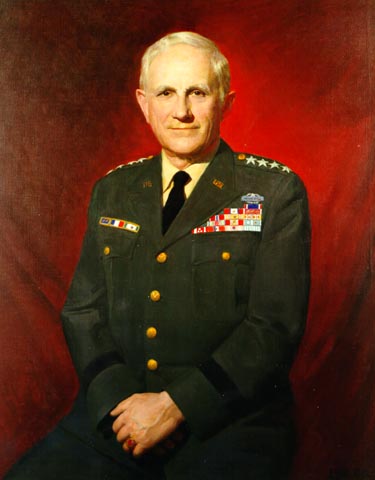
Harold Keith Johnson was born in Bowesmont, North Dakota, on 22 February 1912; graduated from the United States Military Academy, 1933; was commissioned a second lieutenant and assigned to the 3d Infantry at Fort Snelling, 1933–1937; married Dorothy Rennix, 1935; was promoted to first lieutenant, June 1936; graduated from the Infantry School at Fort Benning, 1938; served in the 28th Infantry at Fort Niagara, 1938–1940; was assigned to the 57th Infantry, Philippine Scouts, at Fort McKinley, 1940; was promoted to temporary ranks of captain, September 1940, major, September 1941, and lieutenant colonel, April 1942, and permanent captain, June 1943; was a battalion commander in the defense of the Philippines, was taken prisoner when Bataan fell, survived the "Death March" and imprisonment in the Philippines, Japan, and Korea, and was liberated by the 7th Infantry Division, 1942–1945; was promoted to temporary colonel, September 1945; graduated from the Command and General Staff College at Fort Leavenworth, 1947, and was an instructor there, 1947–1949; graduated from the Armed Forces Staff College, 1950; commanded the 3d Battalion, 7th Infantry, at Fort Devens, 1950; was a battalion commander and commander of both the 5th and 8th Cavalry in Korean War operations, 1950–1951; was plans and operations officer of the I Corps, Far East Command, 1951; was a plans and operations officer in the Office of the Chief of Army Field Forces at Fort Monroe, 1951–1952; graduated from the National War College, 1953; was chief of the Joint War Plans Branch, Office of the Assistant Chief of Staff, G–3, 1954–1955; was promoted to temporary brigadier general (January) and permanent colonel (February), 1956; was executive officer in the Office of the Assistant Chief of Staff, G–3, 1955–1956; was assistant division commander of the 8th Infantry Division, 1956–1957; was chief of staff of the American Seventh Army in Germany 1957–1959, and of the Central Army Group, North Atlantic Treaty Organization, 1959–1960; was promoted to permanent brigadier general, June 1960, was commandant of the Command and General Staff College, 1960–1963; was assistant and then acting deputy chief of staff for military operations, 1963; was promoted to temporary major general, October 1959, permanent major general, April 1963, temporary lieutenant general, July 1963, and temporary general, July 1964; was deputy chief of staff for military operations, 1963–1964, was chief of staff of the United States Army, 3 July 1964–2 July 1968; supervised the Army during the major expansion and deployments occasioned by the Vietnam War, the commitment in the Dominican Republic, the fielding of an airmobile division, and the shift of the United States line of communications in Europe from France to Germany and the Benelux countries; retired from active service, July 1968; died in Washington, D.C., on 24 September 1983.
The Artist
Joseph Richards Essig (1902–1975) was born in Wallingford, Pennsylvania. He pursued his art training at the Pennsylvania Museum, the Metropolitan Museum in New York City, the Pennsylvania Academy of the Fine Arts, and the British Academy of Arts in Rome, Italy. After establishing his studio in Philadelphia, he studied art with Sam Morrow Palmer, Charles H. Woodbury, Leopold Seyffert, and Ceasar Riccardi. While in the Army from 1941 to 1945, he took advantage of a period in England to study under Augustus John and then served on the Continent as a draftsman in the 655th Engineer Topographic Battalion attached to the Ninth Army. His portrait of General Harold K. Johnson was painted from life.
Harold Keith Johnson
By Joseph Richards Essig
Oil on canvas, 40" x 30", 1972
[138]
